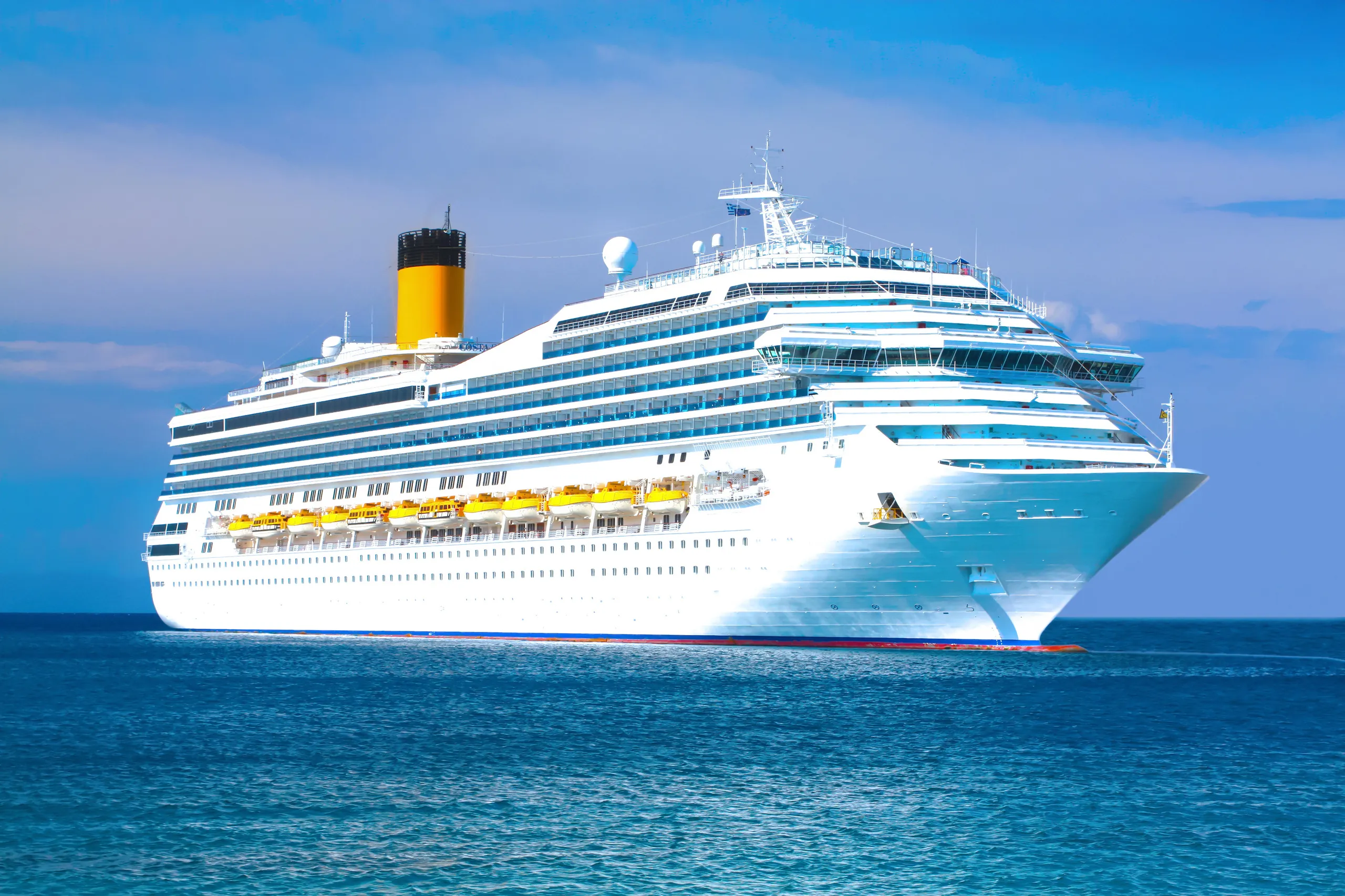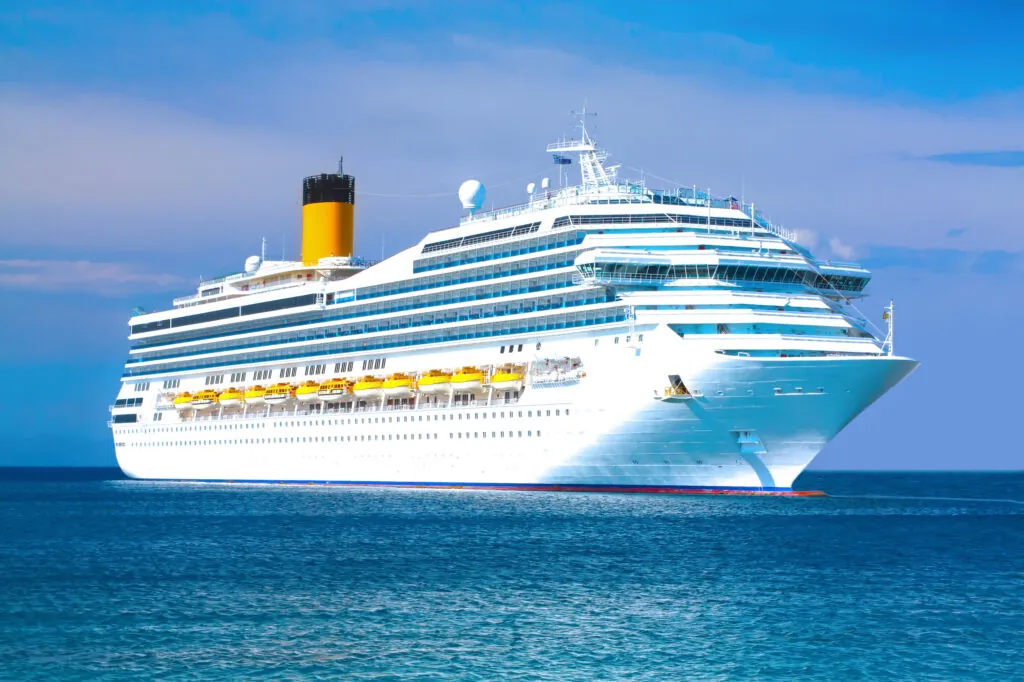Cruising is often synonymous with relaxation, luxury, and adventure. However, a norovirus outbreak can swiftly turn a dream vacation into a nightmare. One of the most recent and high-profile cases involved the Queen Mary 2, operated by Cunard Line. This incident not only drew significant media attention but also raised questions about health safety on cruise ships.
While the outbreak on this iconic transatlantic ship is concerning, it is just one example of the broader challenge that norovirus poses to the cruise industry. This comprehensive guide will explore why cruise ships are especially vulnerable to norovirus, how cruise lines manage outbreaks, and what passengers can do to protect themselves. Additionally, we will discuss the legal rights of passengers affected by such incidents and the role of the CDC in monitoring and controlling outbreaks at sea.
Understanding Norovirus: A Persistent Threat on Cruise Ships
What is Norovirus?
Norovirus is a highly contagious virus that causes gastroenteritis, leading to inflammation of the stomach and intestines. It is notorious for causing outbreaks in closed and communal environments such as cruise ships, hospitals, nursing homes, and schools. Due to its resilience, norovirus can survive on surfaces for several days and is resistant to many standard cleaning agents.
Symptoms of Norovirus
The symptoms of norovirus typically appear 12 to 48 hours after exposure. The most common symptoms include nausea, vomiting, diarrhea, stomach cramps, headache, muscle aches, low-grade fever, and fatigue. The illness usually lasts one to three days, but dehydration can occur, particularly in young children, the elderly, and those with weakened immune systems.
How Norovirus Spreads
Norovirus spreads through various means, including direct contact with an infected person, consuming contaminated food or water, and touching contaminated surfaces. The virus is also airborne when vomit particles become aerosolized, which can happen during bouts of vomiting. Even a small number of viral particles can cause infection, making norovirus highly contagious and challenging to control.
Why Are Cruise Ships Prone to Norovirus Outbreaks?
Close Living Quarters Increase Transmission
Cruise ships are designed to accommodate thousands of passengers and crew members in relatively compact spaces. Passengers share common areas, dining halls, pools, and recreational facilities. This close contact makes it easier for viruses like norovirus to spread from person to person. Even with robust sanitation measures, the confined environment can facilitate rapid transmission.
High-Touch Surfaces Serve as Transmission Points
Cruise ships are filled with high-touch surfaces that passengers and crew frequently use, such as handrails, elevator buttons, door handles, and communal dining utensils. Even if cleaning is frequent, the sheer volume of contact points makes it difficult to eliminate all traces of the virus, allowing it to persist and spread.
Communal Dining Areas Pose Risks
Dining areas, especially buffets, are prime locations for norovirus transmission. Passengers often handle shared utensils, serving trays, and food items, increasing the risk of contamination. Even well-intentioned hygiene practices can falter when hundreds of hands touch the same items.
International Passenger Demographics
Cruise ships attract travelers from around the world, each bringing diverse health backgrounds and potential asymptomatic infections. An individual carrying the virus may not show symptoms until after boarding, inadvertently spreading the virus throughout the ship.
Food and Water Safety Challenges
Foodborne transmission is a significant risk on cruise ships. Improperly handled food or contaminated water can introduce norovirus into the onboard environment. Outbreaks are more common when hygiene standards lapse, such as during the preparation of raw shellfish or when using contaminated ice.
Rapid Reuse of Spaces
Due to the quick turnaround between cruises, cleaning between voyages might not be thorough enough to eliminate all traces of the virus. If an outbreak occurs on one voyage, there is a risk that remnants of the virus could persist into the next trip if not properly managed.
Case Study: Norovirus Outbreak on the Queen Mary 2
The Outbreak Incident
The Queen Mary 2, a flagship of Cunard Line, recently faced a norovirus outbreak during a transatlantic crossing. Passengers reported classic symptoms of norovirus, including nausea, vomiting, and diarrhea. The outbreak prompted immediate action from the ship’s crew and medical team.
Immediate Response by Cunard Line
Cunard Line implemented enhanced cleaning protocols to contain the virus. Passengers were advised to practice increased hygiene, including frequent handwashing and using hand sanitizers. Infected individuals were isolated in their cabins to prevent further spread, and the crew worked tirelessly to disinfect high-touch surfaces and communal areas.
Communication and Passenger Safety
Effective communication was essential in managing the outbreak. Passengers were kept informed through announcements and printed guidelines distributed throughout the ship. The medical staff remained on high alert, closely monitoring those who reported symptoms and providing medical care as needed.
CDC’s Role in Managing Norovirus on Cruise Ships
The Vessel Sanitation Program (VSP)
The Centers for Disease Control and Prevention (CDC) oversees cruise ship sanitation through the Vessel Sanitation Program (VSP). This program is essential in managing public health risks aboard ships that dock at U.S. ports. The VSP conducts routine and unannounced inspections, reviews sanitation practices, and offers guidance on preventing and controlling gastrointestinal illnesses like norovirus.
Monitoring and Outbreak Management
When a cruise ship reports an outbreak, the CDC is notified if more than 3% of passengers or crew show symptoms. Inspectors then board the ship to investigate. They conduct interviews, collect environmental samples, and review the ship’s sanitation logs. The CDC also collaborates with ship personnel to implement control measures, such as isolating symptomatic individuals and increasing disinfection routines.
Public Health Reports
After the investigation, the CDC publishes detailed reports on its website, outlining the outbreak’s scope, containment measures, and any identified lapses in protocol. These reports are accessible to the public, providing transparency and promoting accountability within the cruise industry.
How Cruise Lines Manage Norovirus Outbreaks
- Isolation of Infected Passengers
The first step in outbreak management is isolating those who display symptoms. Sick passengers are often confined to their cabins, where they receive medical care and meals delivered by staff to minimize contact with others.
- Enhanced Cleaning and Disinfection
Cruise lines increase the frequency and intensity of cleaning during outbreaks. High-touch surfaces like railings, door handles, elevator buttons, and restroom fixtures are disinfected multiple times a day using EPA-approved cleaning agents specifically effective against norovirus.
- Crew Health Monitoring
Crew members are routinely monitored for symptoms, as they interact closely with passengers. Sick crew members are also isolated to prevent further transmission. Additionally, crew are trained in hygiene practices and outbreak management.
- Food Handling Adjustments
To reduce transmission, buffet-style dining may be suspended during an outbreak. Instead, food is served by staff wearing gloves and masks to minimize direct contact. Kitchens undergo rigorous cleaning, and staff are instructed to follow strict hygiene protocols.
- Passenger Communication and Education
Keeping passengers informed is vital to managing anxiety and ensuring compliance with health guidelines. Regular announcements advise passengers on handwashing, using sanitizers, and reporting symptoms promptly. Educational posters are displayed in public areas to reinforce these practices.
Passenger Safety Tips: Staying Healthy on a Cruise
- Maintain Personal Hygiene
Regular handwashing with soap and water is the most effective way to prevent infection. Use hand sanitizer when soap is not available, especially before meals and after using the restroom.
- Be Mindful of Food Safety
Choose cooked food over raw items, especially seafood, which can carry norovirus if not properly handled. Drink bottled or purified water rather than tap water.
- Report Symptoms Immediately
If you develop symptoms of gastroenteritis, report to the ship’s medical staff as soon as possible. Early detection helps limit the spread to others.
- Keep Your Personal Space Clean
Your cabin can become a safe haven during an outbreak if kept clean and sanitized. Use disinfectant wipes to clean high-touch surfaces such as door handles, remote controls, light switches, and bathroom fixtures. Avoid sharing personal items with cabin mates, and ensure that you dispose of trash properly and frequently.
- Avoid Crowded Areas
During an outbreak, limit your time in crowded areas such as lounges, buffets, and public entertainment venues. Opt for outdoor activities where air circulation is better, and maintain a safe distance from others whenever possible. If the ship offers room service, consider dining in your cabin instead of joining large groups in dining halls.
- Follow Crew Instructions
The ship’s crew is trained to handle health emergencies. Follow their guidance, whether it involves staying in your cabin, attending health briefings, or participating in health screenings. Compliance not only protects you but also helps reduce the risk to others on board.
- Stay Informed About Health Protocols
Most cruise lines provide detailed health information on their websites and onboard through announcements and informational brochures. Familiarize yourself with the cruise line’s policies before departure and remain updated throughout the journey. Being aware of how outbreaks are managed can help you take proactive steps to protect your health.
Legal Rights: What to Do if You Are Affected by Norovirus on a Cruise
- Understanding Cruise Line Liability
Cruise lines are legally obligated to maintain a safe environment for passengers. This includes implementing effective health and sanitation protocols to prevent outbreaks. If you contract norovirus on a cruise ship and believe the cruise line was negligent, you may be entitled to compensation for your illness, medical expenses, and any financial losses incurred due to missed excursions or extended quarantine.
- Common Grounds for Legal Claims
There are several scenarios where you may have a valid legal claim against a cruise line. One common ground is inadequate sanitation, where the cruise line fails to properly clean the ship after previous outbreaks or does not follow recommended disinfection practices. Another scenario is poor communication, where passengers are not adequately warned about the risk of illness on board. Additionally, inadequate medical care, where onboard healthcare is insufficient or improperly administered, may also constitute negligence.
- Documenting Your Case
If you contract norovirus during your cruise, it is essential to gather evidence. Start by keeping a detailed record of your symptoms and the timeline of your illness. Save copies of all medical reports from the ship’s medical team and any receipts for treatments or medications. Take photos of any unsanitary conditions you encounter, such as dirty bathrooms or improperly handled food.
Speak to other affected passengers and exchange contact information in case collective action becomes necessary. Gathering multiple testimonies can strengthen your case and demonstrate that the outbreak was not an isolated incident.
- Consulting a Maritime Lawyer
Given the complexities of maritime law, it is crucial to consult a lawyer who specializes in cruise ship illness cases. A maritime attorney can help you understand your rights, assess the strength of your case, and determine whether you can pursue compensation. They will guide you through the process of filing a claim, negotiating with the cruise line, and representing your interests in court if necessary.
How Are Cruise Lines Improving Health Safety After Outbreaks?
Enhanced Cleaning Protocols
After experiencing outbreaks like the one on the Queen Mary 2, cruise lines are prioritizing more stringent cleaning procedures. High-touch surfaces are sanitized more frequently, using hospital-grade disinfectants that specifically target norovirus. Electrostatic sprayers and ultraviolet light disinfection methods are increasingly being used to ensure thorough coverage of public and private areas.
Better Food Safety Practices
To minimize the risk of contamination, many cruise ships are moving away from traditional self-serve buffets. Instead, staff members serve food to passengers, reducing the number of people touching utensils. In some cases, buffets are replaced entirely with pre-packaged meals or plated service. Kitchens are also undergoing stricter inspections, and crew members handling food are given additional hygiene training.
Health Screenings Before Boarding
Cruise lines are implementing more comprehensive health screenings before passengers embark. These measures may include temperature checks, health questionnaires, and in some cases, rapid diagnostic tests for common illnesses. Passengers who exhibit symptoms or report recent illnesses may be denied boarding to protect the overall health of the ship.
Improved Air Circulation Systems
Air quality plays a significant role in minimizing the spread of airborne pathogens like norovirus. Many ships are upgrading their HVAC systems to include HEPA filtration, which captures fine particles and viruses. Enhanced air exchange rates help reduce the concentration of airborne contaminants, making the ship’s indoor environment safer.
Real-Time Health Monitoring
Digital health platforms are being introduced to track symptoms and potential outbreaks in real-time. Passengers can report their symptoms via a mobile app, allowing the crew to identify trends quickly and isolate affected individuals before the virus spreads further. These platforms also facilitate direct communication between passengers and medical staff, providing guidance on hygiene and symptom management.
Preparing for Your Next Cruise
- Research Your Cruise Line’s Health Policies
Before booking your trip, visit the cruise line’s website to understand their health and safety protocols. Check for updates on how they handle outbreaks and what preventive measures they have in place. Choose a cruise line with a strong track record of managing health risks effectively.
- Pack a Personal Hygiene Kit
Bring your own supply of hand sanitizer, disinfectant wipes, face masks, and gloves. Consider packing over-the-counter medications for gastrointestinal symptoms, as well as oral rehydration salts. Having these items on hand can make a difference if an outbreak occurs.
- Monitor Health News Before Departure
Stay informed about any reported illnesses on your chosen cruise route. If there have been recent outbreaks on the same vessel, reconsider your plans or take extra precautions. Websites like the CDC’s Vessel Sanitation Program provide current information on health inspections and past outbreak data.
- Be Proactive About Hygiene Onboard
Wash your hands regularly, especially before meals and after touching communal surfaces. Avoid touching your face, and use disposable tissues to cover coughs and sneezes. In dining areas, opt for individually served meals rather than self-serve buffets whenever possible.
- Report Symptoms Promptly
If you start to feel unwell during your cruise, do not hesitate to report your symptoms to the ship’s medical team. Early isolation can help protect others and may also support your case if you later decide to pursue legal action for illness-related damages.
Final Thoughts: Navigating the Future of Cruise Travel
Norovirus outbreaks on cruise ships highlight the importance of robust health management and personal responsibility. While cruise lines are enhancing their protocols to prevent future incidents, passengers must also take proactive steps to protect their own health.
By staying informed, practicing good hygiene, and knowing your legal rights, you can reduce your risk of contracting norovirus while cruising. If you have been affected by an outbreak, it is crucial to seek legal advice to understand your options for compensation.
Contact The Cruise Injury Law Firm Today
If you or someone you know has fallen ill due to a norovirus outbreak on a cruise ship, contact The Cruise Injury Law Firm today to discuss your rights and the possibility of legal recourse. A dedicated attorney can help you pursue justice and hold responsible parties accountable.




